In the first few years of the new millennium there seemed to be a minor revolution occurring in amateur astronomy equipment, specifically in the field of apochromatic refractors. Once the domain of just a few high end brands including Astrophysics Inc. and Takahashi, it suddenly seemed like a new 3 to 5” class refractor was launching every month. Some were ED-doublets, others triplets and occasionally even a quadruplet was thrown into the mix, and they were arriving at a variety of price points. While the cheaper end of the market was really shaken up by the arrival of well performing doublets employing a low dispersion glass element from China, the high end suddenly had a number of new offerings from companies including TEC and TMB. The rate of influx of these new refractors was such that Sky and Telescope ran a five-way shootout of 4” class refractors over two issues of the magazine in 2002. One of the five was the TMB 105 f/6.2 (as well as a substantial mention for the 100mm f/8), with S&T concluding that its performance put it among the very best 4” refractors available in the market.
Having always enjoyed reading reviews of astro-equipment (who doesn’t like to lust over all the ways to spend money in this wonderful hobby?), I lapped up each review that appeared month after month in all the astronomy magazines. However, at the time, having only recently completed a master’s degree in astrophysics, my financial resources were not quite ready to spend £2-4,000 on a 4” telescope. The first upgrade to my observing arsenal after graduation came in the form of an 11” SCT from Celestron on a fork mount. The Nexstar 11 GPS proved to be great fun to use, with reliable pointing and tracking accuracy combined with good optical quality and an aperture that could reveal a lot of the night sky. There was one obvious drawback with the scope and that was the size and weight. A fork mount provides a very stable platform for a scope but at the cost of being a very bulky and heavy unit to move around. The desire to get away from light polluted suburbia is an affliction all astronomers suffer from but I needed something a bit more portable for my dark sky adventures.
In late summer 2004 I decided it was time to add a portable scope to my observing line up and the search was on. Recalling that positive review of the TMB 105 (you can read my review of that scope here having purchased it in 2012), I researched online and found more positive feedback from owners of a variety of different aperture scopes and set my targets on one of the scopes from TMB. The first scope I purchased, with funds from a Christmas job, was a 4.5” f/8 Newtonian on a rather shaky equatorial mount. Believing there was nice circularity by returning to the aperture I started my telescopic adventures with, I decided to purchase the 115mm f/7 triplet. Telescope House had one in stock at £2,599 which included tube rings and dovetail plate. They put together a package which also included 8×50 finder and bracket as well as Tele Optic Giro Alt Az Mount and heavy duty aluminium tripod.
History of APM/TMB and the LZOS Relationship
The late Thomas M Back had a lifelong love affair with amateur astronomy and a particular interest in optics which saw him become a prolific designer of telescope optics and eyepieces. He started the TMB Optical business selling high-end refractors of his design, sourcing lenses made to his design and specification by LZOS in Russia, optical tubes from APM in Germany and focusers from Starlight Instruments in the US.
Based in Lytkarino in Russia, LZOS (Lytkarino Zavod Optychisovo Sticklo – translates as Lytkarino Optical Glass Works) was founded in the Soviet-era to manufacture high end optics for military and research use, and also operated as a Zeiss subcontractor. Unlike virtually all other telescope companies, LZOS actually manufacture the optical glass used in their telescope lenses as well as fabricating the lens cells which allows them to control the entire optical assembly process. LZOS produce their own extra-low dispersion glass, OK-4, which has very similar optical properties as the well-known O’Hara produced FPL-53, though they are able to produce blanks in far larger sizes which allows LZOS to offer triplet refractors of up to 20” diameter.
APM have been in business since 1990 offering a range of reflecting and refracting scopes including large research grade instruments to a variety of observatories around the world. They became the exclusive world-wide agent for LZOS made TMB designed lenses in 1998. After Thomas Back suddenly passed away in 2007, aged only 50, APM retained the rights to his designs and continued to offer them in APM branded scopes.
The Scope
Back in 2004, the 115 f/7 was available in two OTAs. As featured in that 2002 Sky & Telescope review of the 105 f/6.2, one choice was an CNC machined tube by APM which was fabricated to the highest quality (S&T highlighted the mechanicals in their review) but it had one notable drawback, being extremely heavy. “Built like a battleship” has been used to describe the OTA. With the weight of the 115 in this configuration tipping the scales at almost 12kg, my desire to have a more easily transportable scope, led to me choose the light weight alternative, which at the time meant the scope was offered in vixen sourced aluminium tube. While having a perfectly serviceable OTA construction quality and finish, it certainly lacks the finesse of high end models offered by other manufacturers, appearing more like a homebuilt scope. However, the fabrication quality of the lightweight APM OTAs has materially improved since I purchased in 2004, so applicability of the review is more in relation to the quality of the lens and its performance rather than the OTA etc.
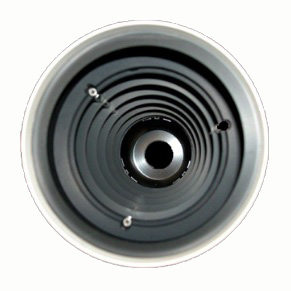
More modern iterations of the 115 have a more complex baffle arrangement with 5 inside the OTA. Source: APM Telescopes UK.
The APM LZOS 115 has an aperture of 115mm with a focal ratio of f/7.0 (805mm). Rather than aluminium, newer iterations (like my 105 and 180 triplets) are supplied with a tube manufactured from a phenolic compound called Kruppax 50 which has superior thermal expansion properties than aluminium reducing thermally induced focus shift as well as being less susceptible to dewing. The OTA of my scope is painted flat black internally with three knife-edge baffles as well as black flocking material inside the dew shield to minimise contrast-robbing internal reflections.
The scope can be supplied with a variety of focuser options, including a 3.5” APM focuser as well as 2.5”, 3.0” and 3.5” Starlight Instruments Feathertouch focusers. However, my 115 was supplied with a 2” Feathertouch mounted on a 15cm sliding drawtube which retracts inside the scope on Teflon strips and is secured with a locking screw which prevents any tilting away from the optical axis. There are a number of benefits to this design including a shorter transportation length at only 61cm compared to an observation length (with dew shield extended) of approximately 80cm as well as the ability to use virtually any diagonal and binoviewer combination without the need for an optical path corrector or Barlow.
My barebones APM LZOS 115 weighs 6.45kg (14.2lbs) which is not much more than my LZOS 105 f/6.2 thanks to that scopes particularly thick, heavily curved lens. Even with the supplied tube rings (not as high quality as the CNC rings supplied with my 105 but lighter in weight) and a finder scope, the scales are tipped at just over 7kg which makes the 115 still rather portable. Combined with my Tele Optic Giro Ercole Alt Az mount (you can read the review here) and Gizto GT5532S Carbon Fibre tripod (read the review here), the entire observing set-up comes in at around 13kg. Crucially, the Ercole is rated for up to an 8kg OTA without a counterweight. I have carried this across London without too much effort for a star party but was thankful I did not require a counterweight as well.
The Lens
After two decades of production of amateur telescope optics, the output from LZOS is known to be in the top echelon of manufacturers. All aspects of the lens cell, from the quality of the optical glass, the grinding of the lens elements as well as the fully-collimatable temperature compensating lens cell and coatings are all that would be expected of a premium telescope offering. The extra low dispersion central element of LZOS made lenses is their proprietary OK-4 glass which is mated with two elements of a special dense crown glass known as OF-1 which is specifically designed to work with OK-4. The TMB design employs air spacing as well different internal radii to control various optical aberrations including sphero-chromatism.
The coatings on the 115 are smoothly applied and exhibit a dark blue hue. Interestingly the dominant tint differs from my newer 105 scope which had a deep blue/violet hue but actually appear very similar as my newest LZOS scope, the 180mm triplet. Crucially, with all three, reflections are extremely faint and the lens almost vanishes when viewed at certain angles. APM states that light transmission is above 96%.
If I have one criticism, it is that the lens cell is almost over engineered. Made from steel, they are quite heavy and larger than perhaps they need to be, but what you do get is an incredibly robust cell which can take a lot more “punishment” than those of many other manufacturers. My 105 in particular has been transported over some rather rough terrain and has held its collimation perfectly.
Despite the robust lens cell, cool down time is still relatively quick at 30-45 minutes (depending on temperature delta) even when taking the scope from a warm house into a frigid-winter night. Though it is not something I have experienced with the 115, the 105 has been used in some particularly low temperatures and has temporarily shown pinched optics when first taken outside. Fortunately, the effect is transient and once the scope has acclimatised, it performs at its best.
The Focuser
Not really needing much introduction, the Feathertouch focusers produced by Starlight Instruments in the US are widely considered the best available. My scope came with the FTF2025BCR which benefits from a 2.5” drawtube in addition to the almost 6” of travel provided by the sliding drawtube. The focuser is very precise and is capable of supporting heavy loads of several kilograms with no reduction in performance. Just as with my 105, the focuser is held in place by three 1mm hexagonal bolts, 120 degrees apart with an Allen key.
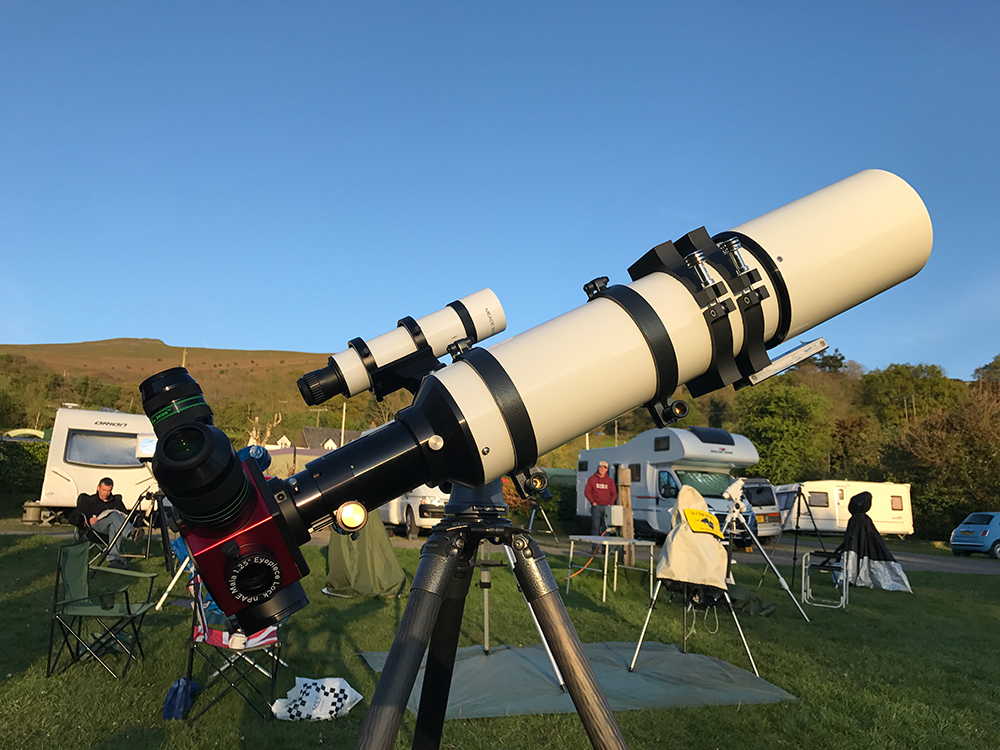
While reviewing the nPAE 6061 eyepiece turret, I used the 115 at Astrocamp. Despite requiring more weight at the front of the scope for balance, the c.5kg load at the focuser was ably handled by the drawtube and feathertouch.
Details on flatteners, focal reducers
While I am a dedicated visual astronomer, many wonderful astro-photos that have been taken with the 115 can be found online. However, in today’s modern astro-photography world with readily available large sensors means a flattener will be required to avoid revealing field curvature in the image. APM actually offer a variety of flatteners for use with the 115 including a 2.5” model as well as a medium format flattener, both of which maintain the native focal length. A Massimo Riccardi designed reducer is also available with a reduction factor of 0.77x which reduces the focal ratio to a rather quick f/5.25.
Under the Stars
Some views through a telescope just stay with you, long after the observing session has ended. Many of those nights for me are in far-away lands under dark skies we can only really dream of in the UK. However, one memory was made in the far more mundane location of my parent’s suburban back garden on the south coast in Hampshire. And it was first light with my 115. As with most new scopes, it came wrapped in clouds and combined with work commitments meant that my first time out with the scope came quite a while after I took delivery. Finally, the stars did align, and it was under the crystal clear, but cold early-winter skies. Near the end of the session the Orion Nebula (M42) had reached an altitude of around 30 degrees and I decided to take a look at a familiar old friend. M42 was my first messier object with my 4.5” Newtonian many years earlier, and while both scopes shared the same aperture, that is where the similarity ended. It was truly a wow moment. I had never seen such delicate detail before and thanks to the superb contrast of the scope, the extension of the nebula was far greater than I had seen previously with that aperture. All the stars in the field, including the trapezium (and the E and F components) were tiny jewels that other telescope designs just don’t quite match. It was a memorable view and one that has been repeated many times since on numerous deep-sky objects. The sharp image, tight stellar images and excellent contrast really allows the scope to deliver a view of DSOs that belies its 4.5” aperture.
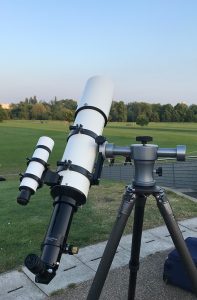
The 115 at a Baker Street Irregular Astronomers star party delivering some stunning views of the moon.
Thanks to that first light session and all the observing that followed, it was quite some time before I decided to star test the 115. It did not reveal anything I had not already learnt through extended use. The Fresnel diffraction pattern shows almost perfect level of spherical correction with virtually no detectable colour on the outside rim inside or outside of focus. As with all quality telescopes, the image just snaps to focus and at f/7, the focal plane is a little deeper than I have more recently become accustomed to with both my 105 (f/6.2) and Takahashi FS-60 (f/5.9). While I have quite accommodative eyes, a sharp image seen across more than 95% of the view with a wide-field eyepiece with just a slight defocusing at the periphery due to field curvature. This means scanning the summer Milky Way with an eyepiece such as my 21mm Ethos (2.6o field) is really rather special, with a level of emersion not seen with scopes that cannot maintain a sharp image across the field.
False colour performance is exactly what is expected from a well corrected triplet. There just isn’t any. Whether viewing the limb of the Moon, or the shadow inside a crater, Venus, Vega or Sirius, I have not detected any chromatic aberration.
The excellent contrast seen on DSOs means the scope also lends itself rather well to planetary exploration as well. Recently I took the 115 to a monthly meeting of the Baker Street Irregular Astronomers in Regents Park. While mother nature did not provide us with an entirely clear sky and restricted us to views of the Moon, Venus and Jupiter, the seeing conditions were at times, rather good, especially considering the low altitude some of solar system neighbours currently achieve as seen from the UK. There were as many as 20 telescopes in attendance that evening, of all different designs and apertures, from SCTs and Maks, to Newtonians and several refractors, as well as around 150 people of differing experience levels wondering around taking a peak at the celestial delights on offer. I lost count of the number of people who told me that my scope was the best there. I think it does say something about how sharp the image, how readily available the details are to be seen, that even novices are quick to identify the quality of what they are seeing.
That experience certainly mirrors my own view formed over the last 14 years of observing the planets with the 115mm. When seeing conditions allow, the rulebook about 50-60x per inch of aperture can be tossed aside with exit pupil really being the limiting factor. Some of my best views of Saturn have been with this scope. Delicate banding on the disc is easily seen, as are many of its moons with even some subtle shading in the rings themselves. Similar performance is seen on Mars and Jupiter with plenty of low contrast features on show as well as the often-gentle hues of the surface features.
While I am not one to spend much time on our nearest celestial companion, the views I have had of the Moon have certainly left an impression. Jet black shadows and numerous subtle shades of grey and white along with a very sharp image bring into view some challenging craters and features for scopes in this aperture class.
The sharp stellar images seen in DSOs, along with excellent contrast also means that double star performance is first-rate. All the usual targets such as Rigel, the Double-Double and Castor present no real challenge. Double star observing is a pursuit that can cut through light-pollution so I often find myself pushing the envelope with the aperture I am using. I have achieved splits which are very good at the aperture class. Delta Cygnus (Al Fawaris) at 2.8” separation, magnitude +2.91 & 6.27 was relatively straight forward despite the magnitude differential. When the seeing conditions are exceptional, I have also split Pi Aquilae (1.4”, +5.75 & +6.34) and most impressive, Zeta Herculis (1.3”, +2.84 & +5.40) with the secondary sitting on the first diffraction ring using the 2.5mm setting of my 2-4mm Nagler Zoom.
Shootout between my 105 and 115
After I acquired my APM LZOS 105 in 2012 for a trip to Oman which included a stay in the desert, hundreds of kilometres from any settlement of note, the 115 became somewhat relegated to storage. Not only had the 105 delivered an incredible stargazing experience in Oman, but given its size, the scope is more portable, fitting in a Think Tank Photo Airport Security V2 Rolling Camera Bag (read the review here), making it easier to carry across London for Baker Street star-parties. The 105 is an excellent scope, delivering fantastic levels of performance, but I always wondered how it compared to my 115, so I took the opportunity to perform a shootout at Astrocamp in the Brecon Beacons, a silver rated dark sky reserve, mounted side by side using the Tele Optic Erocle mount.
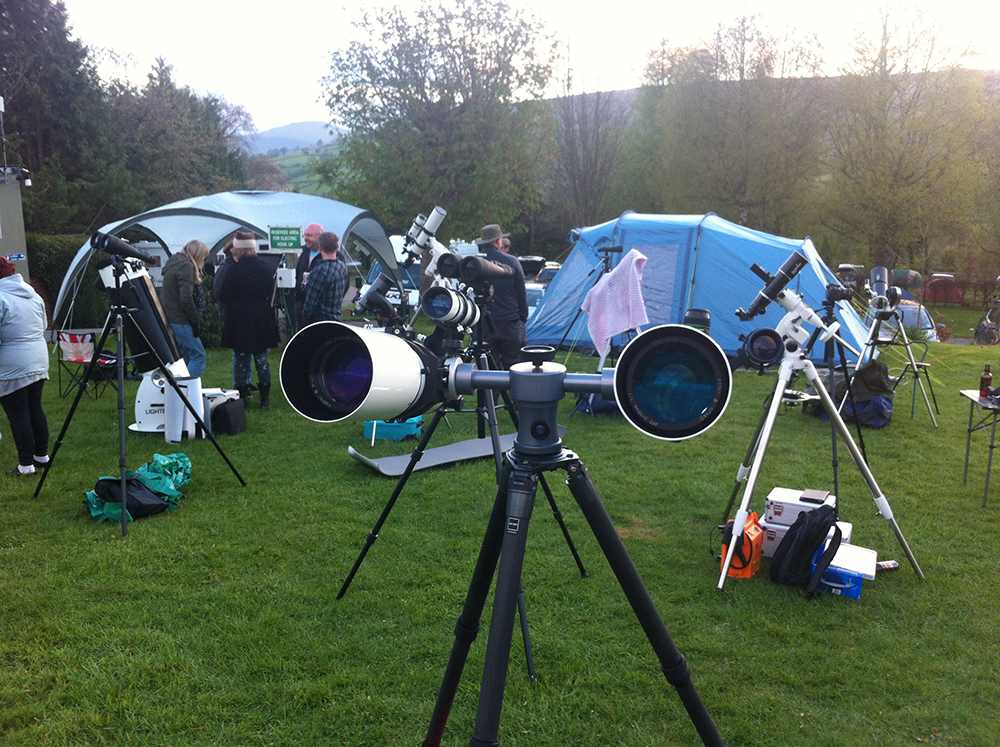
A clash of the titans . The shootout between the 105 on the left and 115 on the right, all mounted on the Tele Optic Ercole Alt Az.
While it was not a rigorous comparison (mostly just enjoyed the view), I was able to closely match magnification and exit pupils using eyepieces from the same line up simultaneously. For example, the Nagler 3-6mm Zoom at 5mm in the 115 yields 161x, the 4mm setting of the Nagler Zoom 2-4mm in the 105 produces 162.5x. I also co-opted a few experienced observers for opinions on different objects throughout the night.
In short, it was a very close run competition on Jupiter, with everyone agreeing that the 115 was just shading it with a touch more low contrast detail visible and a slight advantage in sharpness. However, the differences were only apparent when seeing exhibited its most tranquil moments. Given the larger aperture of the 115, intuitively it is expected to outperform on deep-sky, but with only 10mm aperture advantage, everyone thought the differences would be very slight. Comparing views of Open Clusters, I estimated a 0.3-0.5 magnitude advantage which with concentrated observation was noticeable, but would likely be missed during quick looks. On extended objects such as nebulae and galaxies, there was a little more detail / extension visible. The improvement was modest but definitely noticeable. It was also noted during the night, that star colours were shown better in the 115.
The conclusion at the time was I was very lucky to own two great scopes, but the 115 just edged it in absolute performance.
Current Availability from New as of June 2018
In October 2016, the owner of APM, Markus Ludes, posted in the vendor forum on Cloudynights.com that LZOS production of Apo lenses would soon halt for the foreseeable future due to large orders of optics by the Russian government, which unfortunately use the same production facilities as the LZOS Apo lenses. Being partially state owned, those orders are given priority. Something similar occurred in 2013 when I was waiting for my APM LZOS 180 f/7 which ended up being several months later than originally scheduled due to an order for “space optics.” The consequence is that the ability to purchase new LZOS made lenses is coming to an end at least for scopes of 6” aperture and under. APM have made a last order and as of the date of this review (June 2018), hold several hundred thousand euros of lenses ready for almost immediate delivery. Sadly, there are no 115mm lenses left. As such, if you are in the market for the 115 f/7, you will need to look towards the second-hand market. The most recent list price for a new APM LZOS 115 with a 3” APM focuser (the base model, Feathertouch focusers would be more) was £4,049 so keep that in mind when searching the classifieds.
Conclusion
With so many scopes in my observing arsenal, I have to confess that I have somewhat neglected my 115 over the last few years. With LZOS production ending, I could not resist the opportunity to acquire the 130mm f/9.25, the best colour corrected 5” refractor available with an image quality that is almost legendary. However, having triplet refractors of 105mm, 115mm and 130mm is arguably an unjustifiable indulgence. While the 105 is not quite the optical match of the 115 (still a remarkable scope) but being airline portable, it seemed that the 115 would have to go.
While I wait for delivery of the 130mm, the 115 has recently found itself being the scope I find myself reaching for when observing. Perhaps some nostalgia for those views back in 2004 is driving the choice. Unfortunately for me, it has reminded me just what a fantastic scope the LZOS 115 is and now I find myself facing the dilemma of not wanting to part with it. Delivering a view that I have not managed to surpass in its aperture class, while going slightly, but certainly noticeably deeper than scopes only ½” smaller in aperture and still being very portable at only 60cm in length and around 7kg in weight means there is a lot to recommend the 115 as a scope to take away domestically in the UK as well as for use at home under my light-polluted central London skies. If you are in the market for a high-quality scope in the 4” aperture class, the TMB designed, APM LZOS 115 f/7 should definitely be on your list, even if the only method for sourcing it is now on the second-hand market. I just cannot promise that if you go looking, my 115 will be available for you to buy.







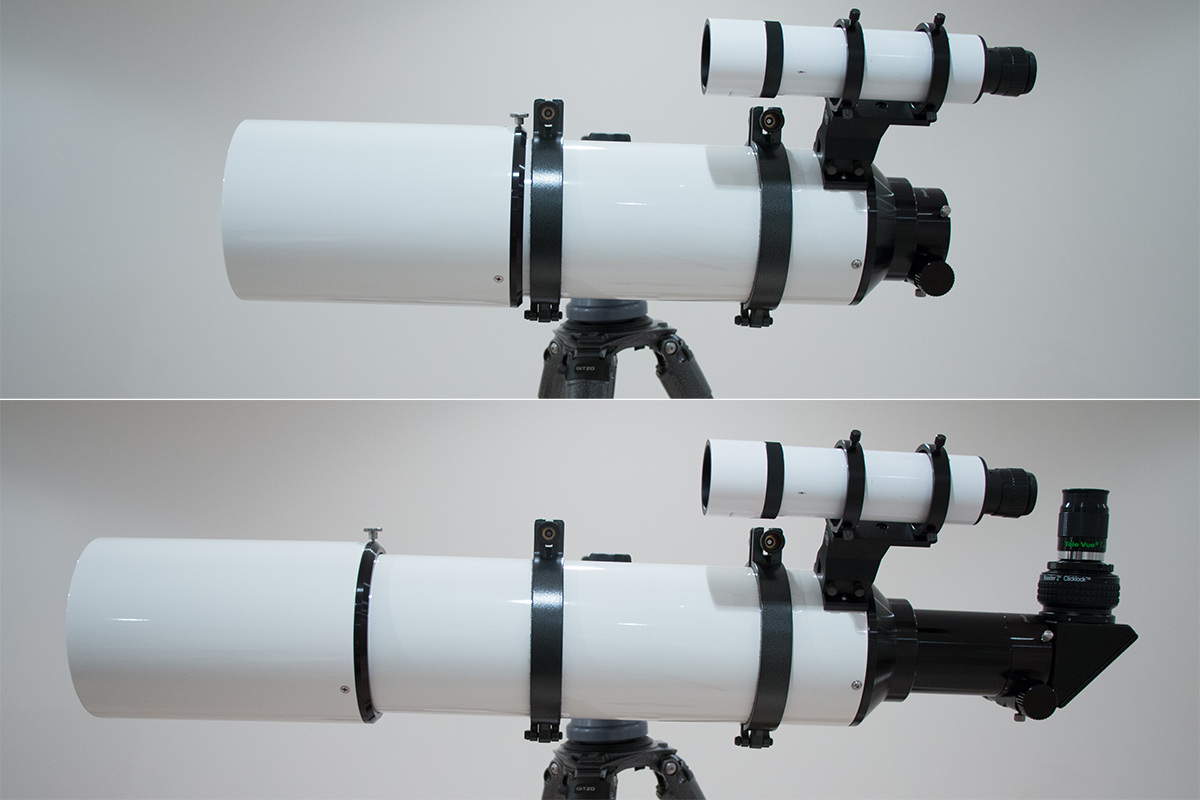
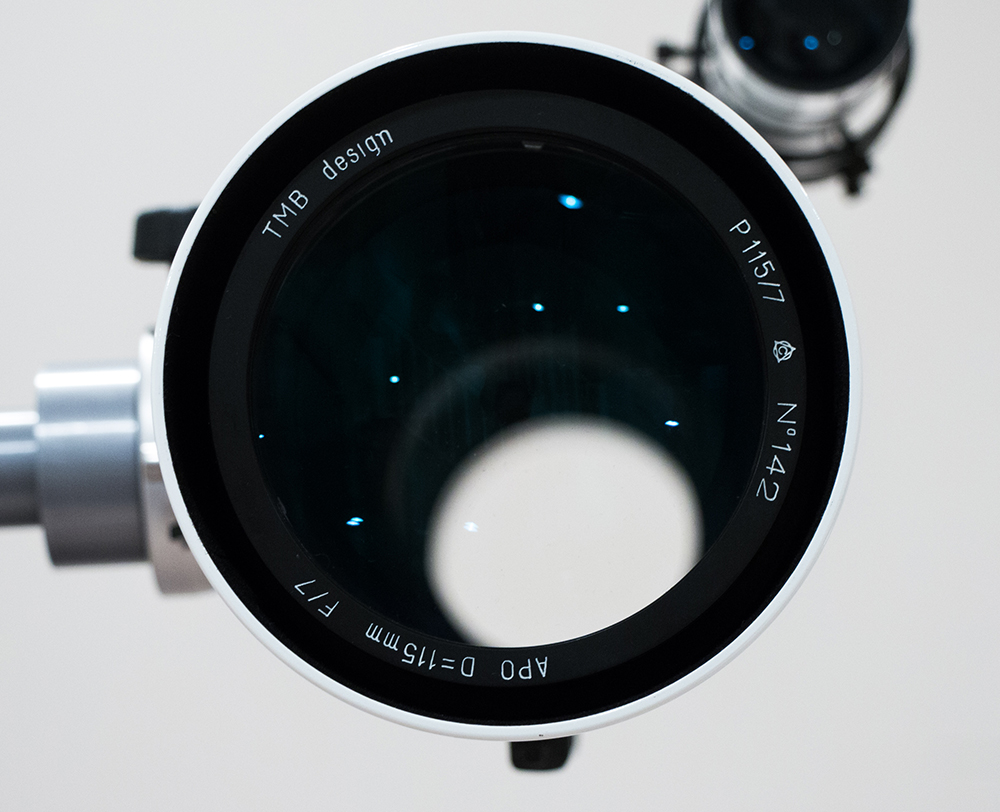
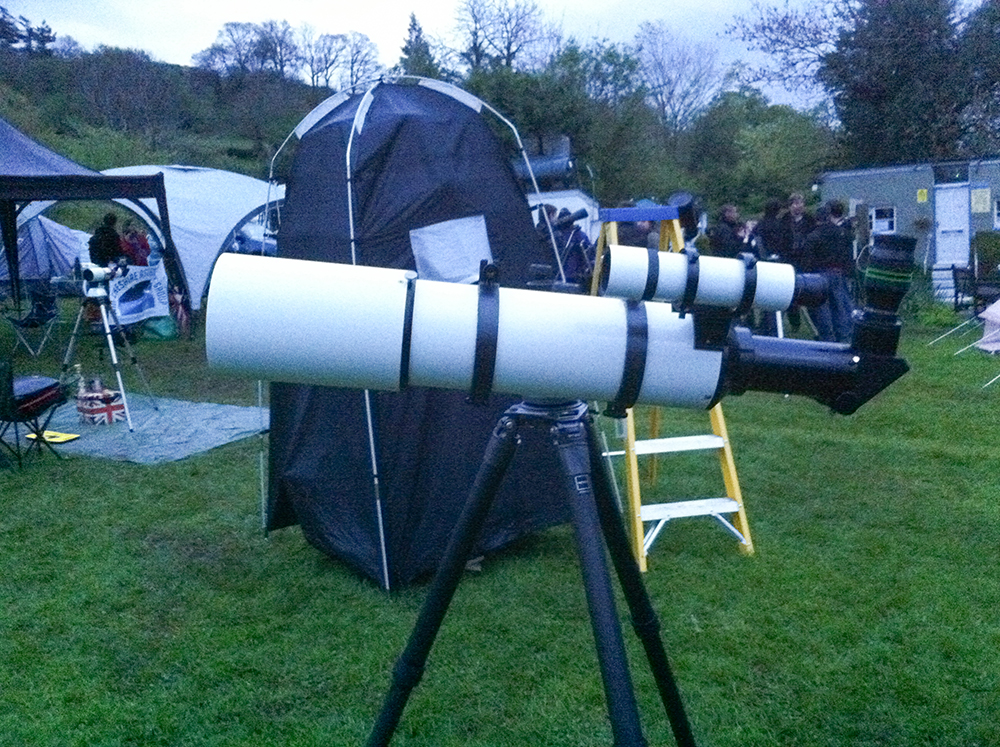

Hi Matthew,
As always a joy to read. Especially as I share your fondness for these particular LZOS refractors, owning the 105 and 130 (F6) models myself. It’s like you said, if the seeing allows for it, they can be pushed far beyond their theoretical limits. Only aperture and encumbrance sets them apart.
I’m hoping you will soon write something more about your new 130 F9.25 and something about the 180 maybe as well. Four of those beauties, what a treat ! I’ll be watching out for them. Take care.
I have theTMB92 I never used due to clouds.
Great review.
Grateful for this review. Discovered (whilst visiting APM) it is possible to remove the focuser AND unscrew the triplet lens assembly in order to reduce the tube length to airline portable dimensions.